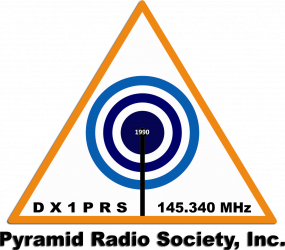Broadband over Power Lines (BPL) and the Amateur Radio Service
By: Alaric Hernaez, DW1KWM
Recently a news from a local newspaper, The Inquirer had caught the attention of the Amateur hobbyists. It said that Manila Electric Co. (Meralco) with Philippine Long Distance Telephone Co. (PLDT) through its subsidiary Pilipino Telephone Corp. (Piltel) will test a Broadband over Power Lines (BPL) project in Malabon City after August 2009 for two or three months.
The BPL project although can potentially provide cheaper high-speed internet to public and a new cash cow for the country’s biggest power retailer will cause havoc in the Amateur Radio Service as it will cause interference in the HF band.
What is Broadband over Power Lines or BPL?
BPL is a system that is being tested and deployed to provide broadband Internet service via powerlines. Radio energy is coupled onto power lines and is distributed into homes. A device in the home (modem) plugs into a normal wall outlet and typically provides an Ethernet connection to a computer or home network.
BPL is also known in some countries as Power Line Telecom (PLT). It can also be referred to as Broadband Powerline Carrier, or just PLC, although the acronym PLC is more applicable to an older technology that is used for telemetry and control in power systems and is not the same thing. BPL is mainly in testing in the United States and a few foreign countries. A few carriers are actually selling the service to customers. BPL is intended as another residential broadband technology similar to DSL and Cable.
Why are Amateur Radio Operators in an uproar over BPL?
BPL is a system that is being tested to provide broadband Internet service via powerlines. The system uses radio frequencies that do radiate into the air. They can cause interference to licensed services like Amateur Radio Service as well as international shortwave broadcasters and a variety of communications systems (military, aeronautical, etc.). This interference has been seen and documented in most of the BPL trial areas. BPL experimental licenses have been issued allowing some systems to operate between 2 and 80 MHz (megahertz). This particular band of frequencies are generally known as HF (which is actually 3 – 30 Mhz) or “shortwave” frequencies.
What is technically wrong with BPL?
The medium of BPL (the powerline cable), unlike any other broadband medium (copper twisted pair, fiber, coaxial cable), is inherently unsuited for carrying the frequencies BPL uses.
Power lines are unshielded and will act as antennas for the signals they carry. Power lines are designed to carry electrical power. They were not designed to carry radio signals. They do this very poorly, loosing much of the signal to losses and, more importantly, radiating them as radio signals that can and do affect nearby receivers using those frequencies. Amateur radio operators and shortwave listeners are all found commonly in the residential neighborhoods where BPL will be installed. They will all suffer strong interference if BPL uses their frequencies at the permitted levels. Interference has been observed nearly one mile from the nearest BPL source.
What should we Amateurs do?
This article was written in response to the call by Eddie Valdez, DU1EV through the Philippine Amateur Radio Association (PARA) together with other local Amateur Radio Club to put a stop to this BPL project. The Pyramid Radio Society, Inc. joins this crusade by informing other local Hams through this website. A drafted letter was made by Ed, DU1EV (available at PARA website) to be send to concern agencies like Meralco, PLDT, NTC, NTC Commissioner, Commission on Information and Communication Technology (under the Office of the President) so they could at least look into it.
